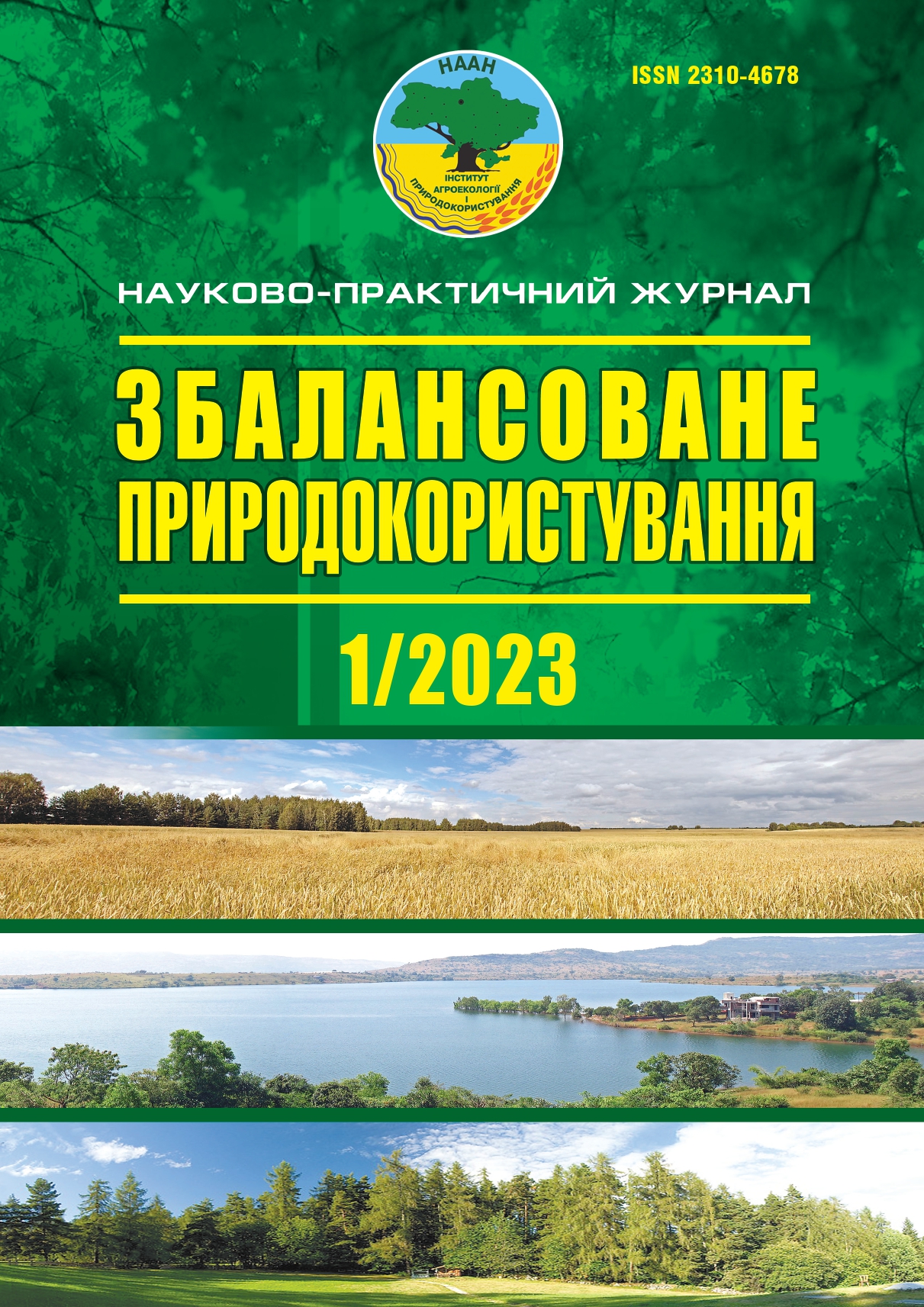Assessment of the suitability of soils for the production of organic plant production at the local level of territory development
DOI:
https://doi.org/10.33730/2310-4678.1.2023.278547Keywords:
fertility, land suitability, degree of suitability, agrochemical indicators, anthropogenic influence, macro- and microelementsAbstract
The development of organic production in Ukraine is a promising and relevant issue today. Organic farming has many advantages, including the preservation of soil fertility, reduced environmental impact, and the provision of high-quality and safe products. A farm that utilizes its fertile soil for organic production can have a positive impact on the quality of its products and increase their value on the market. It is important to note that maintaining organic farming requires systematic work to support soil fertility. That is why it is recommended to regularly conduct agrochemical analyses and implement restorative measures to increase soil fertility. The article provides scientific evidence that the soils of the agricultural company “Bazis” located in the Uman district of Cherkasy region are suitable for the production of organic crops. To do this, an assessment of the territorial location relative to possible sources of anthropogenic impact and radiation contamination of the territory was carried out. In the settlement, there is no landfill for solid household waste and storage facilities for pesticides and chemicals. The main polluting enterprises are located 12 km away, in the district center, Uman. Сontinuous agrochemical land survey of agricultural land was conducted. This analysis allowed us to establish that the soils have an optimal level of humus and nutrients, do not contain harmful metals and other toxic substances. Thus, it can be stated that the soils of the farm of the agricultural company “Bazys” of the Uman district, Cherkasy region are suitable for growing organic plant products, which guarantees the quality and safety of the produced products.
References
Ahrokhimichnyi analiz [Agrochemical analysis]. (2005). Kyiv [in Ukrainian].
Vovk, V.I. (2004). Sertyfikatsiia orhanichnoho silskoho hospodarstva v Ukraini: suchasnyi stan, perspektyvy, stratehiia na maibutnie [Certification of organic agriculture in Ukraine: current state, prospects, strategy for the future]: Orhanichni produkty kharchuvannia. Suchasni tendentsii vyrobnytstva i marketynhu: materialy mizhnarodnoho seminaru — Organic Food Products. Modern Trends in Production and Marketing: Materials of the International Seminar (pp. 3– 7). Lviv [in Ukrainian].
Humeniuk, H.D., Badzhura, O.V. (2010). Orhanichne vyrobnytstvo v sviti — istoriia rozvytku ta suchasnyi stan [Organic Production Worldwide — History of Development and Current State]. Bioresursy i pryrodokorystuvannia — Bioresources and Nature Management, vol. 2, No 3, 56–62 [in Ukrainian].
Yakist gruntu. Pokaznyky rodiuchosti gruntiv. [Soil Quality. Indicators of Soil Fertility]. (2004). DSTU 4362:2004. URL: http://online.budstandart.com/ua/catalog/doc-page?id_doc=67099 [in Ukrainian].
Makarenko, N.A, Bondar, V.I. & Makarenko, V.V. (2008). Vstanovlennia dopustymykh kontsentratsii shkidlyvykh rechovyn [Establishment of Allowable Concentrations of Harmful Substances]. DSTU 4944:2008. K.: Derzhspozhyvstandart Ukrainy [in Ukrainian].
Yakist gruntu. Metod vyznachannia orhanichnoi rechovyny [Soil Quality. Method for Determination of Organic Matter]. (2004). DSTU 4289:2004. URL: http://online.budstandart.com/ua/catalog/doc-page.html?id_doc=56400 [in Ukrainian].
Kysil, V.I. (2005). Ahrokhimichni aspekty ekolohizatsii zemlerobstva [Agrochemical Aspects of Agriculture Ecologization]. Kh.: "13 typohrafiia" [in Ukrainian].
Kysil, S. (2012). Porivniannia natsionalnoi zakonodavchoi bazy Ukrainy ta Yevropeiskoho Soiuzu shchodo bezpechnosti kharchovoi produktsii [Comparison of the National Legislative Framework of Ukraine and the European Union on Food Safety]. Naukovo–tekhnichnyi zhurnal “SSIa” — Scientific and Technical Journal "SSA", 4, 57–60 [in Ukrainian].
Klitna, M.R., Bryzhan, I.A. (2013). Stan i rozvytok orhanichnoho vyrobnytstva ta rynku orhanichnoi produktsii v Ukraini [State and Development of Organic Production and Organic Product Market in Ukraine]. Efektyvna ekonomika — Efficient Economy, 10. URL: http://www.m.nayka.com.ua/?op=1&j=efektyvnaekonomika&s=ua&z=2525 [in Ukrainian].
Mylovanov, Ye.V. (2016). Orhanichne silske hospodarstvo v Ukraini: zakonodavstvo ta perspektyvy [Organic agriculture in Ukraine: legislation and prospects]. URL: https://dspace.organic-platform.org/xmlui/handle/data/432 [in Ukrainian].
Makarenko, N.A. (Ed.). (2014). Orhanichna silskohospodarska produktsiia: osnovni vymohy do yakosti ta umov vyrobnytstva: nauk.-metod. rekom. [Organic Agricultural Products: Main Quality Requirements and Production Conditions: Scientific and Methodological Recommendations]. Kyiv [in Ukrainian].
Ratoshniuk, T.M. (2012). Ekonomichnyi mekhanizm stymuliuvannia vyrobnytstva ekolohichno chystoi produktsii [Economic Mechanism for Stimulating the Production of Environmentally Clean Products]. Ekonomika APK — Agricultural Sector Economy, 1 (25), 150–154 [in Ukrainian].
Downloads
Published
Issue
Section
License
- The authors reserve the right to authorship their work and pass the journal the right to publish this work under a Creative Commons Attribution License license, which allows other persons to freely distribute the published work with the obligatory The authors of the original work and the first publication of this magazine.
- The authors have the right to make independent additional agreements on the nonexclusive dissemination of the work in the form in which it was published by this magazine (for example, to post work in the company's electronic storage or to publish as a monograph) , subject to the first publication of the link to this journal.
- Journal policy allows and encourages the placement of authors on the Internet (for example, in the repositories of institutions or on personal websites) manuscript work as to the presentation of this manuscript to the editorial board and during its editorial processing, as it contributes to The productive scientific discussion and positively affects the efficiency and dynamics of citation published work (see The Effect of Open Access).


